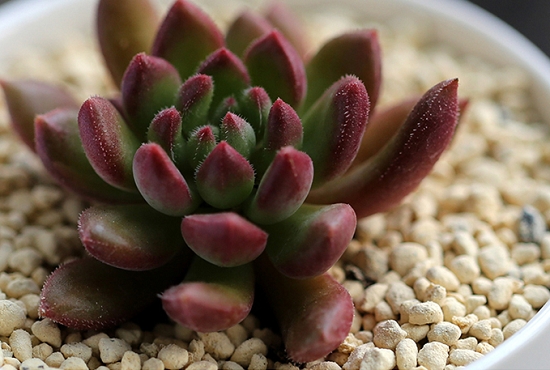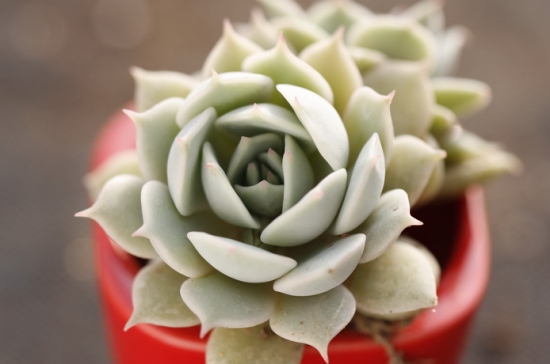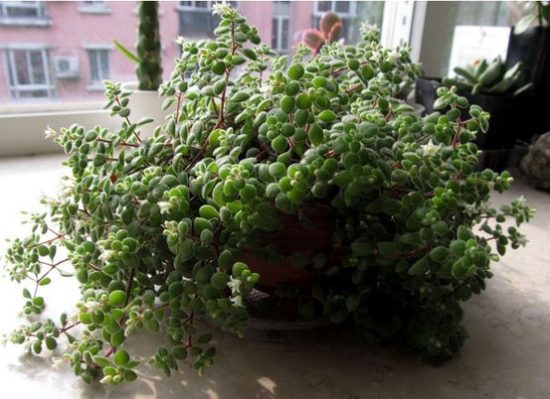Culture methods and matters needing attention of succulent red lips

Morphological characteristics of red lips
Red-lipped plants erect, rosette, solitary, gregarious, solitary or multiple. Leaves, whorled, fleshy, thick, spatulate, or lanceolate, flat on the front, raised on the back, keel line, grass green, tip, leaf margin flushed, autumn and winter, in full light, as the temperature difference increases, the leaves will be redder and richer, wine red, reddish brown, pink, some even the whole leaf, the whole plant becomes red, especially the leaf tip is as red as "dyed". There are fine short villi on the leaves and stems, which adds to the ornamental.
Red lips bloom in summer, buds like mini hair balls, 5 petals, yellowish, with fine reddish brown halo spots, flowers bloom gradually from bottom to top.
Growth habits of succulent red lips
Red lips, strong nature, fast growth rate, like sunny, warm, dry growth environment. Resistant to drought and semi-overcast, not cold, avoid wet water, afraid of muggy heat. The suitable temperature for growth is 20-30 degrees Celsius, and it can be planted outdoors all the year round. However, the high temperature in summer needs proper shade, and when it is extremely low in winter, it needs to be kept indoors in the sun for a short time, so that the plant can be bathed in plenty of sunshine and breathe fresh air. Grow stronger.
Matters needing attention in cultivating succulent red lips
Red lips do not have a very high demand for water, so pot soil can keep it moist, or stick to the general practice of "no dry, no watering, watering thoroughly". In rainy seasons, it is necessary to properly control water and prevent stagnant water. If the temperature is low in winter, watering should also be controlled. The sandy loam with loose and good drainage is the best for planting soil, which can be prepared by itself or ready-made, and can be properly added to the basin, such as slow-release granular fertilizer, sterilized dry cow dung, plant ash and so on. Leaf insertion is generally used in the way of reproduction, which is easier to survive.
- Prev

Can succulent plants purify the air?
Plants can protect against radiation, plants can purify the air. Now people's requirements for plants are no longer limited to beautifying the environment. Can such succulent plants purify the air? Let's see.
- Next

How to raise succulent plants in Bonia
Bonia succulent plants originated in southern Africa, the better state of the Bonia leaves grow chubby, furry, very lovely. So how should Bonia succulent be raised? Let's take a look.
Related
- Wuhan Hospital Iron Tree Blooming Result Was Instantly Frightened by the Gardener Master
- Which variety of camellia is the most fragrant and best? Which one do you like best?
- What is the small blue coat, the breeding methods and matters needing attention of the succulent plant
- Dormancy time and maintenance management of succulent plants during dormancy
- Minas succulent how to raise, Minas succulent plant pictures
- What are the varieties of winter succulent plants
- How to raise succulent plants in twelve rolls? let's take a look at some experience of breeding twelve rolls.
- Attention should be paid to water control for succulent plants during dormant period (winter and summer)
- Watering experience of twelve rolls of succulent plants
- Techniques for fertilizing succulent plants. An article will let you know how to fertilize succulent plants.

